Around the World in Sculptures
Sculptures have been a popular art form for thousands of years, providing a fundamental insight into ancient cultures and serving as a testament to the skill of the artists. They are primarily made of stone, which increases the likelihood of their survival over time. From the iconic Bust of Nefertiti to the Venus of Willendorf and the Statue of Liberty, sculptures can be found all around the world, showcasing extraordinary artwork from various eras and civilizations.
Whether it’s the ancient terracotta army in China, the classical masterpieces in Europe, or modern sculptures in different parts of the world, these artistic creations are a testament to our collective human experience and are definitely worth exploring.
Venus of Willendorf
The Venus of Willendorf is a stone sculpture of a nude woman discovered in Willendorf, Australia. While this sculpture may not be as impressive as others on this list, it is one of the oldest, estimated to have been created 25,000 – 30,000 years ago.
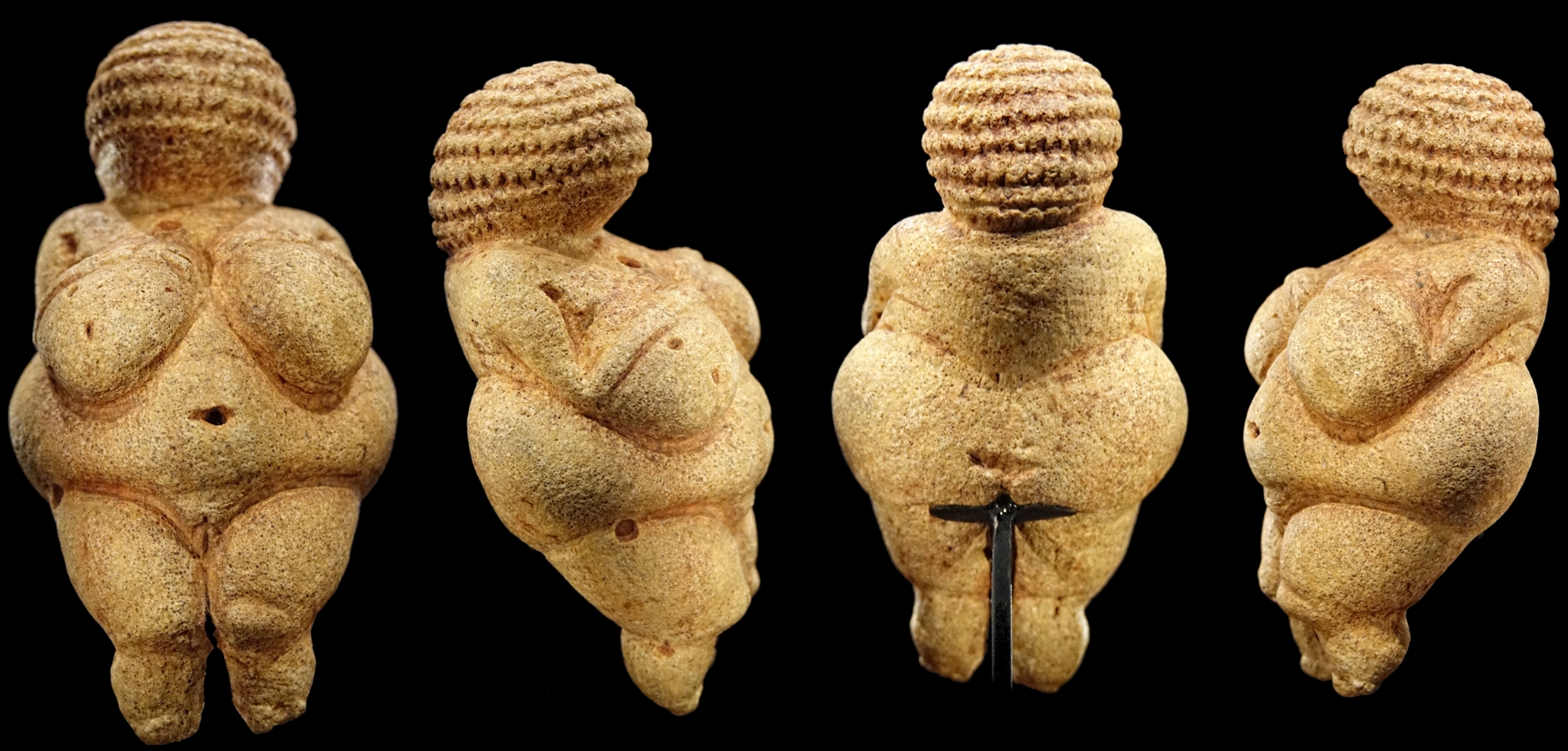
Source: Wikimedia
Many archeologists have debated the actual purpose of the sculpture, many believe it is associated with fertility and childbearing. Others believe it could have been a good-luck totem, a mother goddess symbol, or even an aphrodisiac made by men.
Bust of Nefertiti
The Bust of Nefertiti was created around 1340 BC by Thutmose and was discovered in Tellel Amarna, Egypt. This sculpture is impressive as it is one of the most copied works of Ancient Egypt, and is commonly referred to as an icon of feminine beauty.
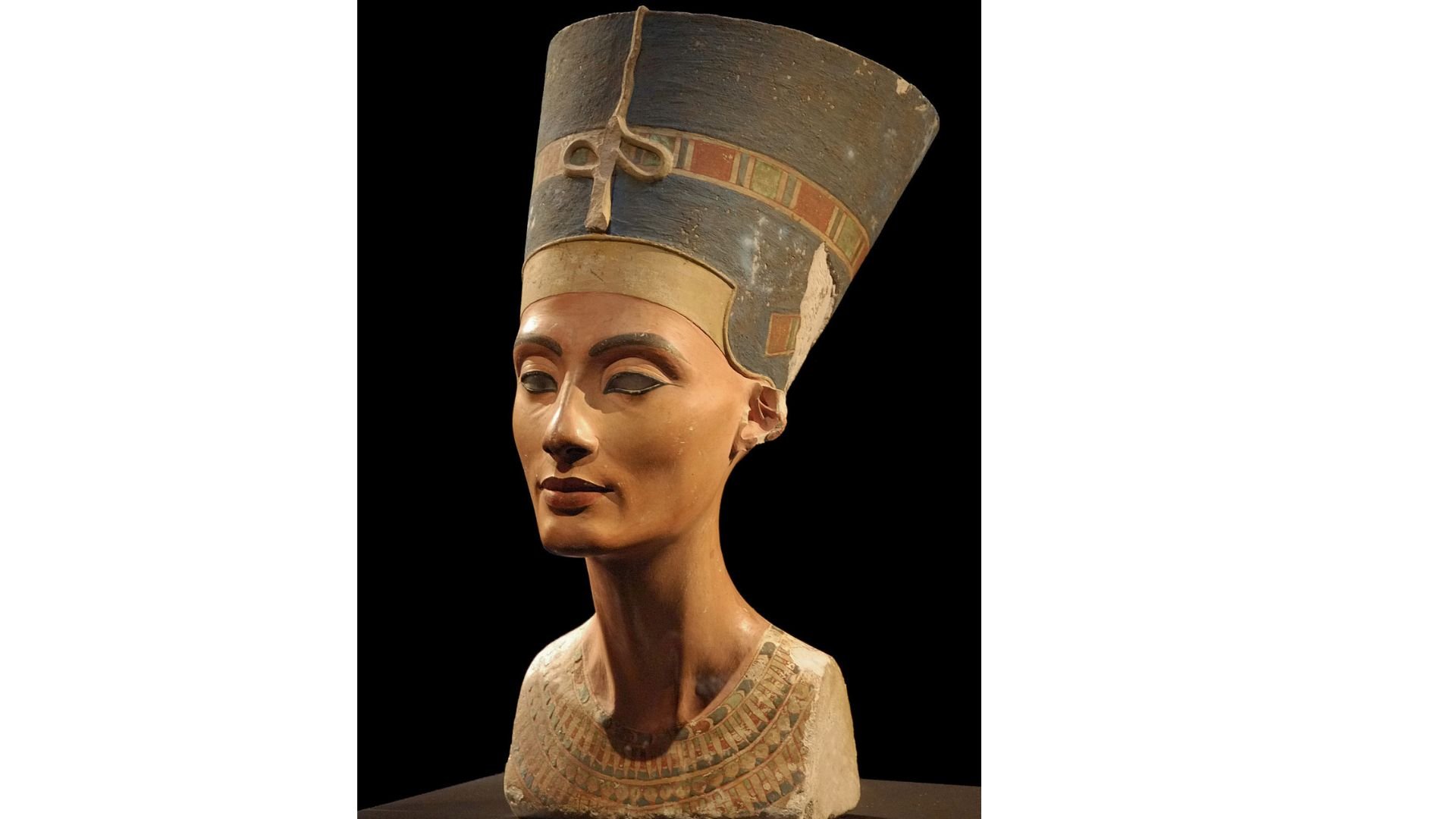
Source: Wikipedia
This sculpture has coincidentally become a cultural icon of Berlin. The sculpture’s face is featured on postcards of Berlin and 1989 German postage stamps. The sculpture is currently on display in the North Dome Room of the Neues Museum.
David
David, by Michelangelo, is one of the most impressive pieces of artwork from the Italian Renaissance. The sculpture is currently on display at the Galleria Dell’Accademia in Florence, Italy.
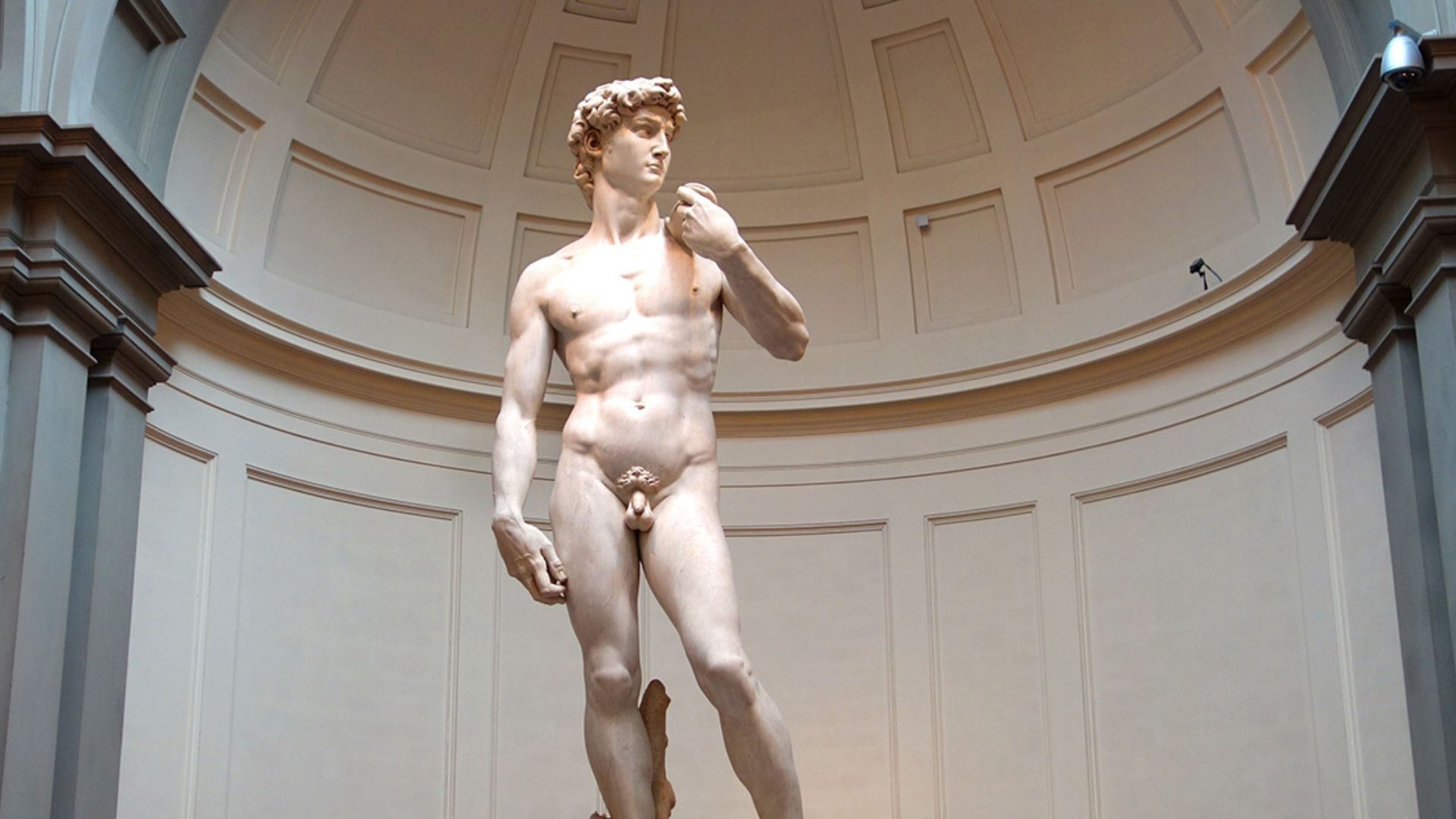
Source: Wikimedia
David was originally created as a religious sculpture, ultimately becoming a civic symbol for Florence. An interesting aspect of this piece is that the slingshot David carries is almost invisible, showing his victory was due to being clever instead of sheer force.
Guitar
The Guitar sculpture was created by Pablo Picasso in 1914.
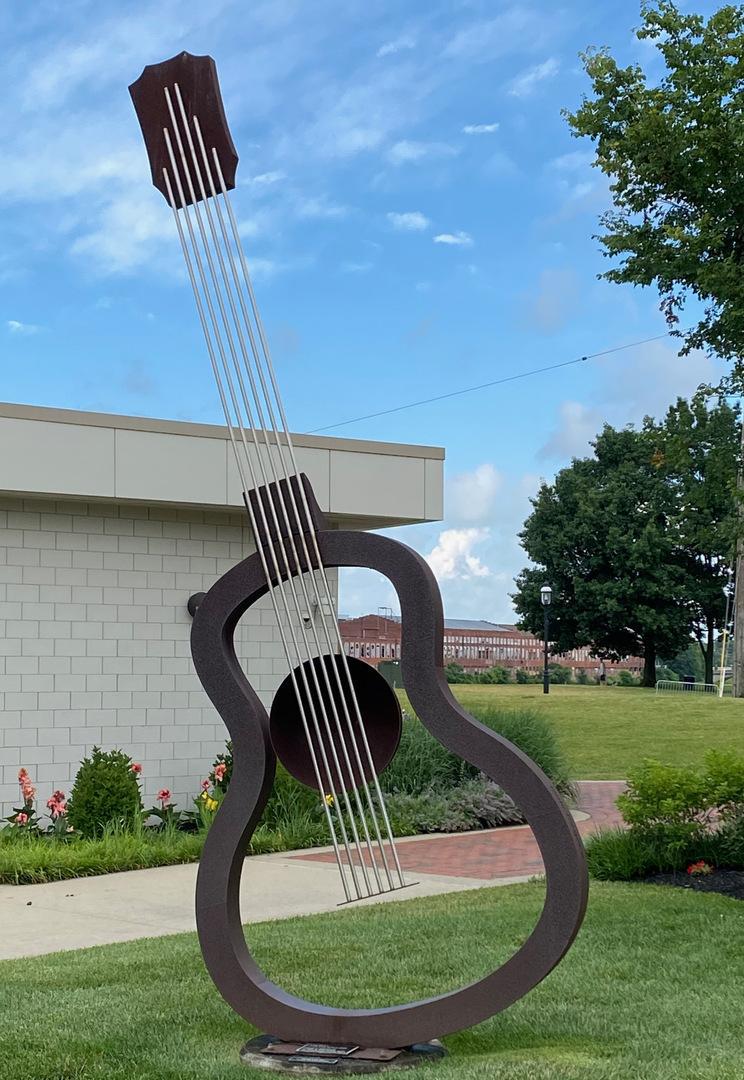
Source: Sculpturecenter.org
The sculpture demonstrates how visual forms can be read in context, as the guitar’s sound hole, which normally recedes from the instrument’s smooth surface, projects outward into space.
Great Sphinx of Giza
The Great Sphinx of Giza is a limestone statue in Giza, Egypt, created during the reign of King Khafre. The Sphinx is arguably the most famous landmark in Egypt and is the best-known example of sphinx art. Furthermore, it is also one of the largest sculptures in the world, standing at about 240 feet long and 60 feet high.
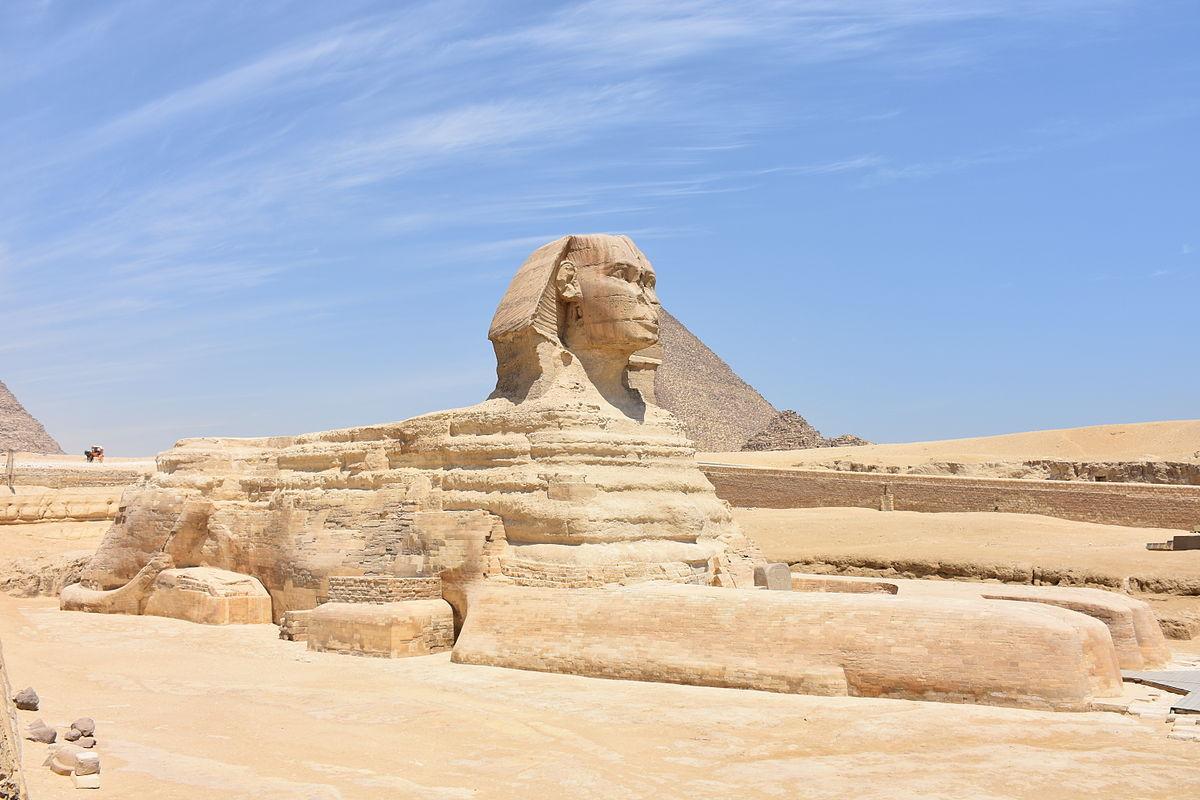
Source: Wikimedia
There are many interesting facts about the Great Sphinx of Giza, starting with the fact that it was carved from a single piece of limestone. As far as original creation, there is much to debate. Some suggest that it was originally formed by nature and later modified by human carving.
Venus de Milo
Venus de Milo, commonly known as Aphrodite of Milos, was created during the Hellenistic period by Alexandros of Antioch. The sculpture was found on the island of Milos, Greece, and has been displayed at the Louvre Museum in Paris since 1821.

Source: Wikimedia
The statue is supposed to depict Aphrodite, colorfully painted and adorned with jewelry. This sculpture has inspired the work of many artists like Niki de Saint-Phalle, Yves Klein, Arman, Clive Baker, and Jim Dine.
The Thinker
The Thinker is a bronze sculpture created by Auguste Rodin in 1904. Given the sculpture’s stance, a pose like they were in deep thought, it is often used to represent philosophy.
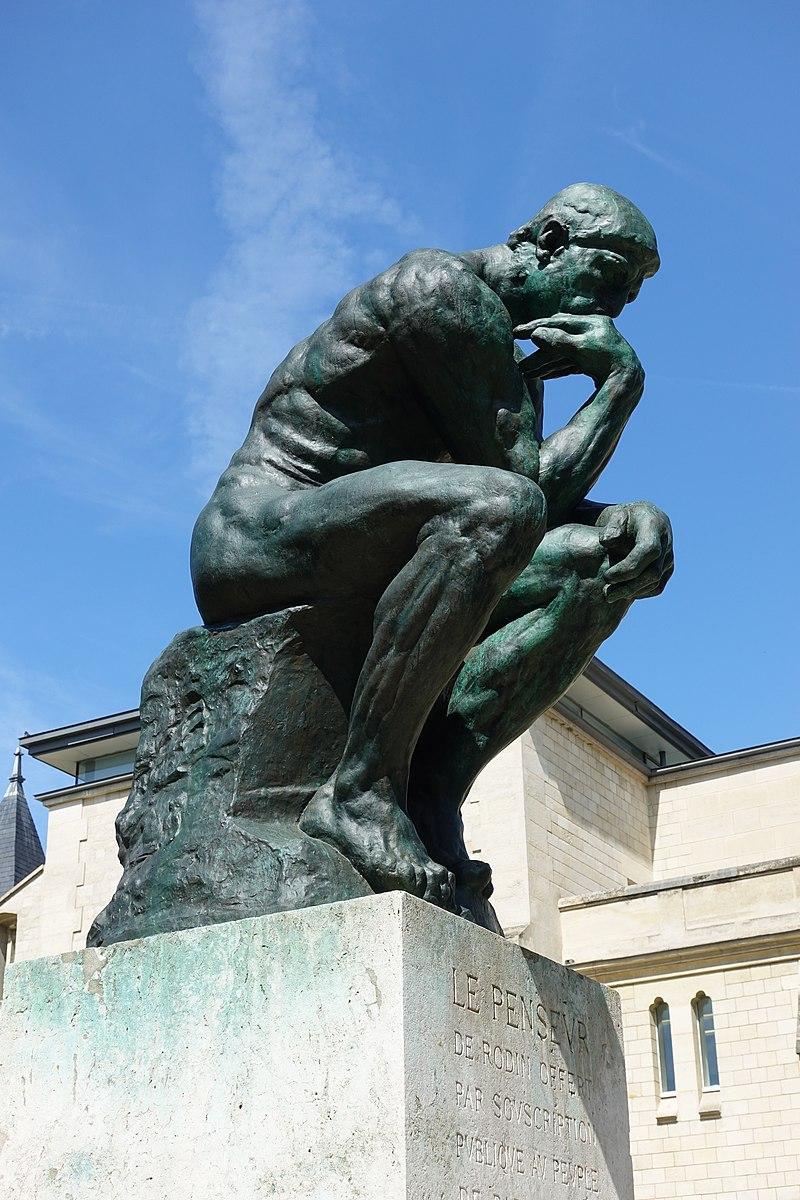
Source: Wikimedia
The Thinker was created as a part of Rodin’s work, Gates of Hell, commissioned for the Musee des Arts Decoratifs in Paris. The sculpture was inspired by Dante Alighier’s masterpiece, The Divine Comedy.
Walking Man
The Walking Man is a bronze sculpture created by Alberto Giacometti in 1947. Giacometti drew influence from the artistic environment and the post-World War II atmosphere in Paris.

Source: Elpais
The Walking Man has been featured throughout many different auctions and exhibitions, with one version selling for $104.3 million at Sotheby’s auction in 2010.
Les Voyageurs
Les Voyageurs is a series of iconic sculptures created by Bruno Catalano, which depicts men and women travelers with large portions of their bodies missing. Catalano actually drew inspiration from his own life experiences as a sailor and as an immigrant to France from Morocco.
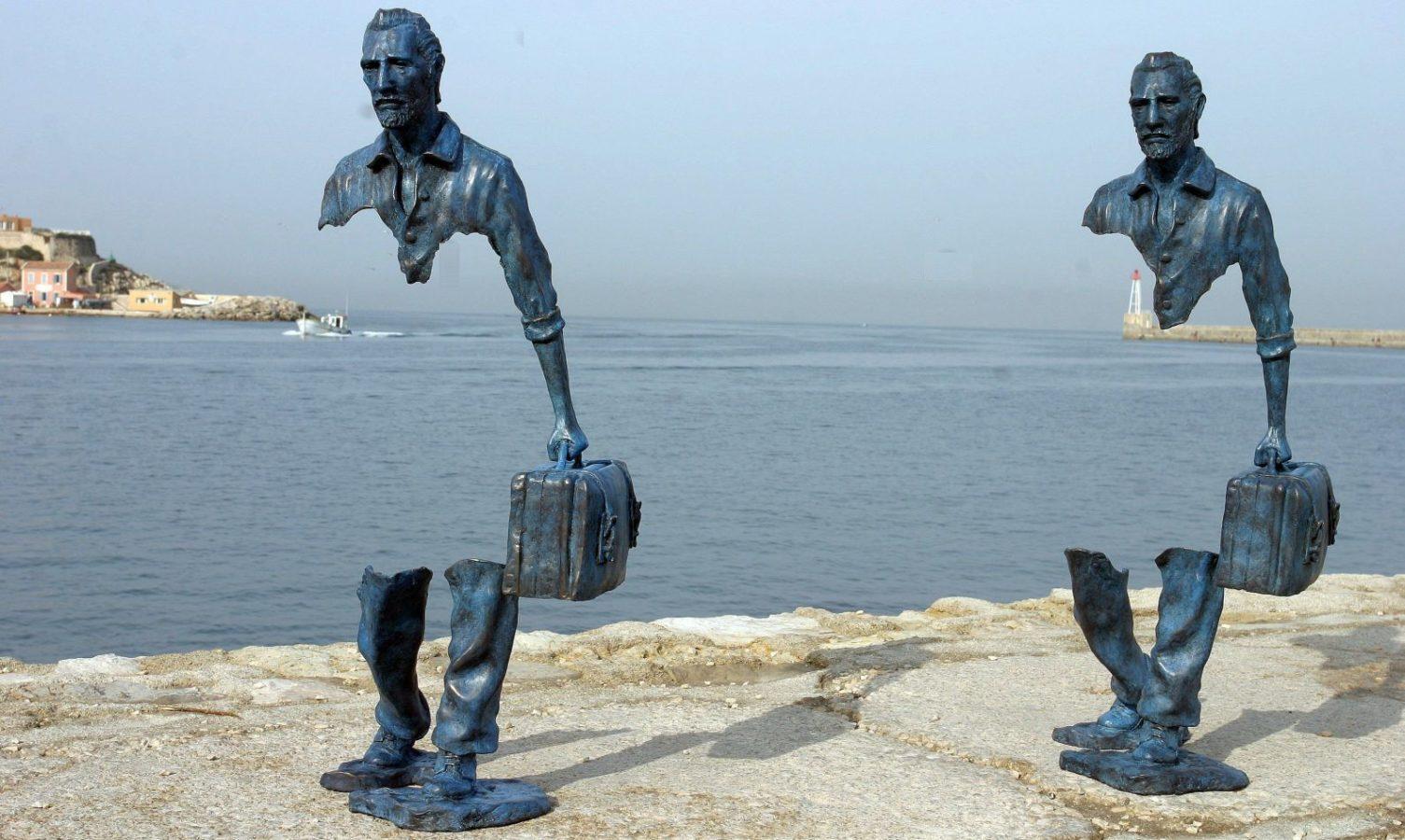
Source: Reddit/drkmatterinc
The Les Voyageurs sculpture depicts many different themes like travel, migration, journeying, home, belonging, and the experiences of a “world citizen.” The most famous Travler sculpture is the “Le Grand Van Gough,” now on display in Calgary, Canada.
The Monument of An Anonymous Passerby
The Monument of An Anonymous Passerby is a significant sculpture in Wroclaw, Poland, created by Jersey Kalina. The sculpture consists of 14 life-sized human figures, seven on each side of the street, ascending and descending into the ground. The sculpture is often used as a memorial to the citizens killed or missing during the martial law period in Poland.

Source: 4travel.jp
Marital law drove many people underground in fear; they were even arrested in the middle of the night and disappeared. The pedestrians rising out of the sidewalk are used to signify the resilience and strength of the Polish people during this time period.
Ocean Atlas
Ocean Atlas is an impressive underwater sculpture designed by Jason deCaires Taylor. This sculpture is a single figurative sculpture deployed underwater, which reaches five meters up from the seafloor to the surface. This sculpture is located off the west coast of New Providence in Nassau, Bahamas.
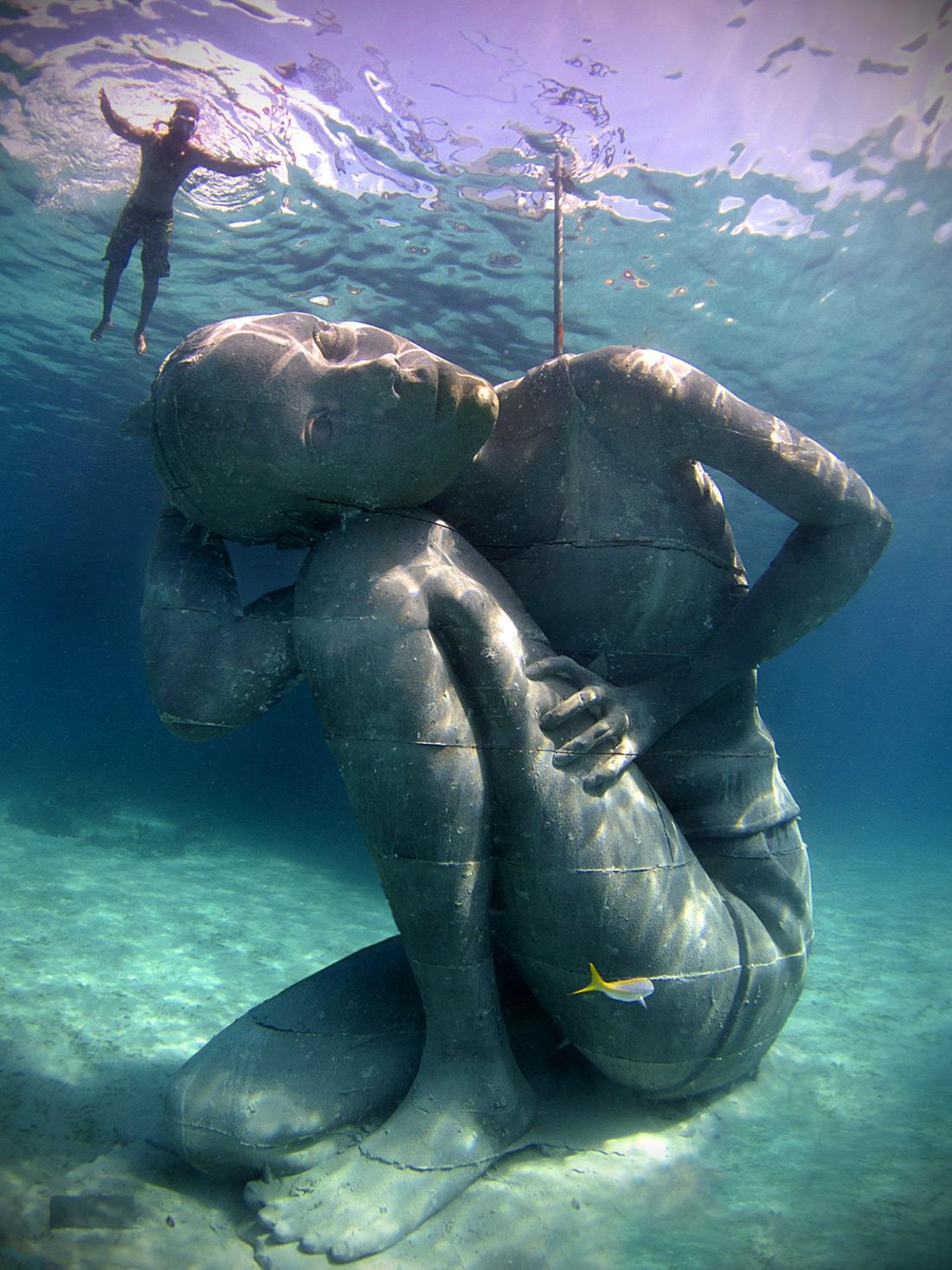
Source: Reddit/mike_pants
Ocean Atlas is used to symbolize the burden that future generations must carry and even to represent the challenges faced by the oceans and coral reefs. The sculpture was created with pH-neutral materials, creating an artificial reef for marine life.
The Little Mermaid
Den Lille Havfrue, also known as the Little Mermaid sculpture, was created by Edward Erisken and is located in Copenhagen, Denmark. The statue was commissioned by Carl Jacobsen shortly after he watched a ballet performance based on the fairy tale by Hans Christian Andersen.
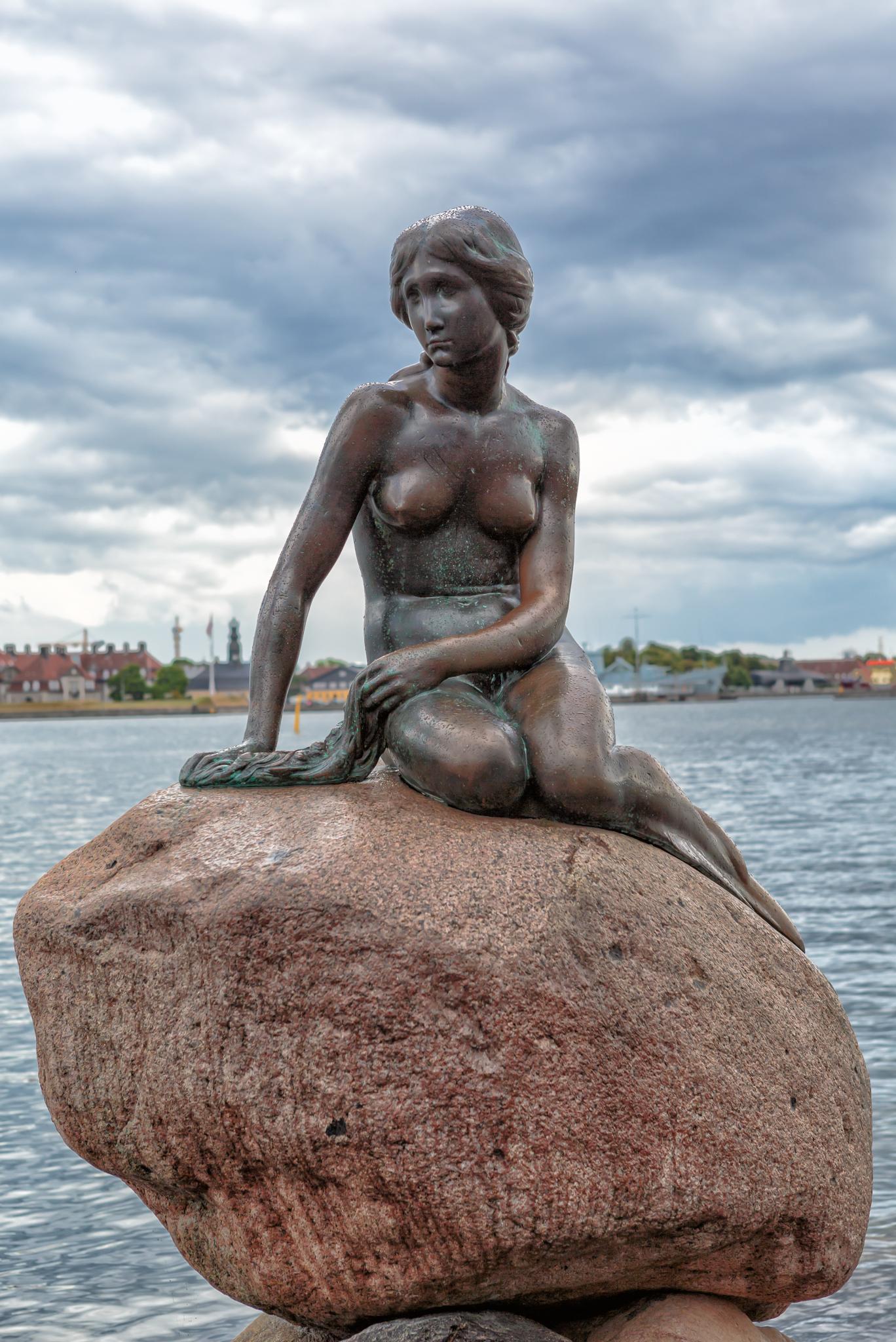
Source: Wikimedia
Ellen Price held the lead role in the ballet but declined to model nude for Eriksen, so he had his wife pose for the sculpture. The sculpture is sadly a highly targeted option for vandalism, even losing her head twice, her arm saw off, and paint poured on it multiple times. Despite this, the statue stands to be an iconic symbol for Copenhagen and Denmark.
Moat
The Moat sculpture is a fantasy-inspired sculpture created by Design Toscanini.
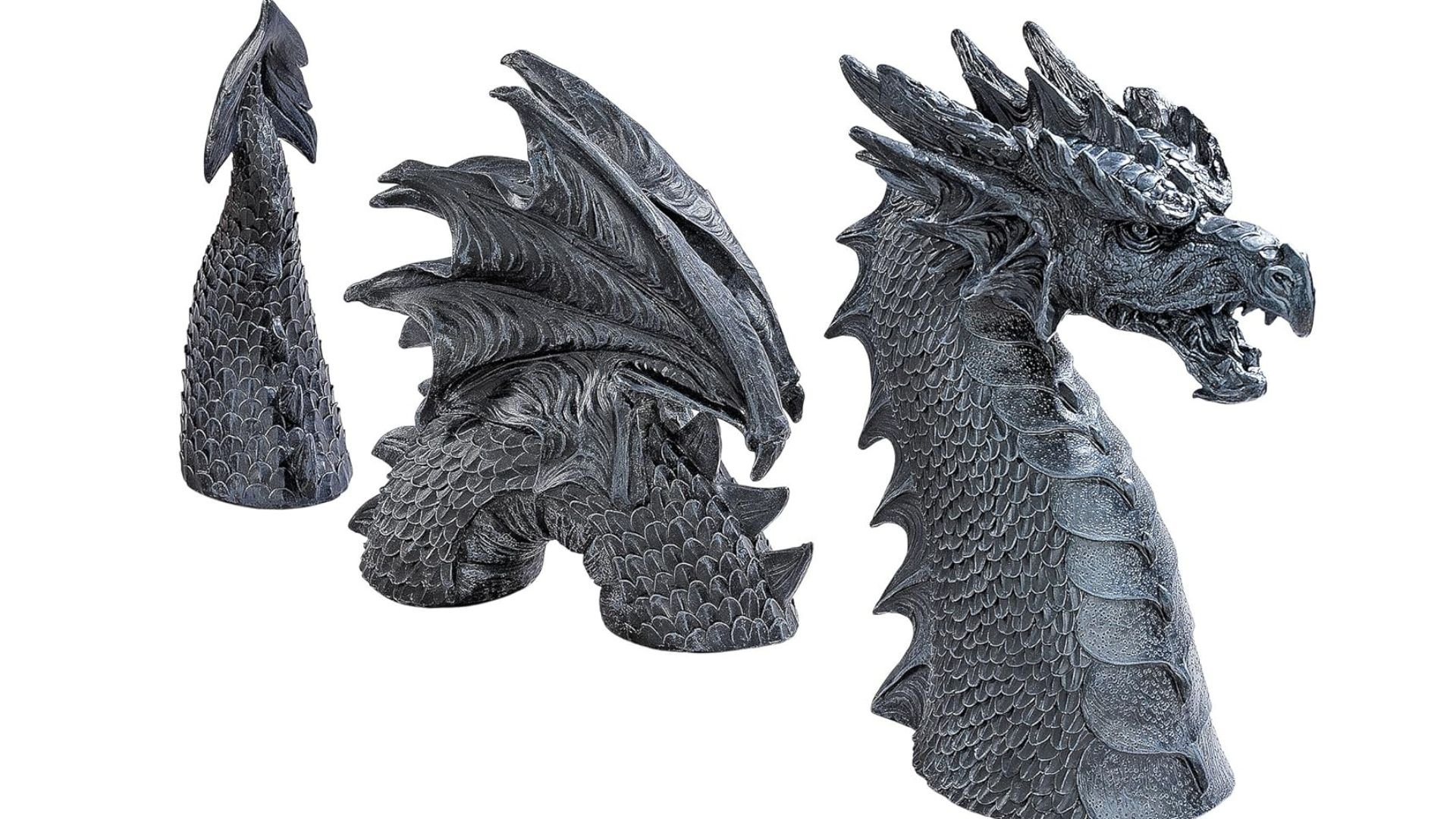
Source: lmskitchen
The dragon itself is intricately detailed, even featuring scales, wings, and a tail.
The Pieta
The Pieta is another impressive sculpture created by Michelangelo Buonarroti in the late 1490s. The Pieta is currently housed in St. Peter’s Basilica in Vatican City, featuring the Virgin Mary holding Jesus Christ after his crucifixion. Michelangelo was originally commissioned by Cardinal Jean de Billheres which was placed at a side chapel at Old St. Peter’s Basilica in Rome.
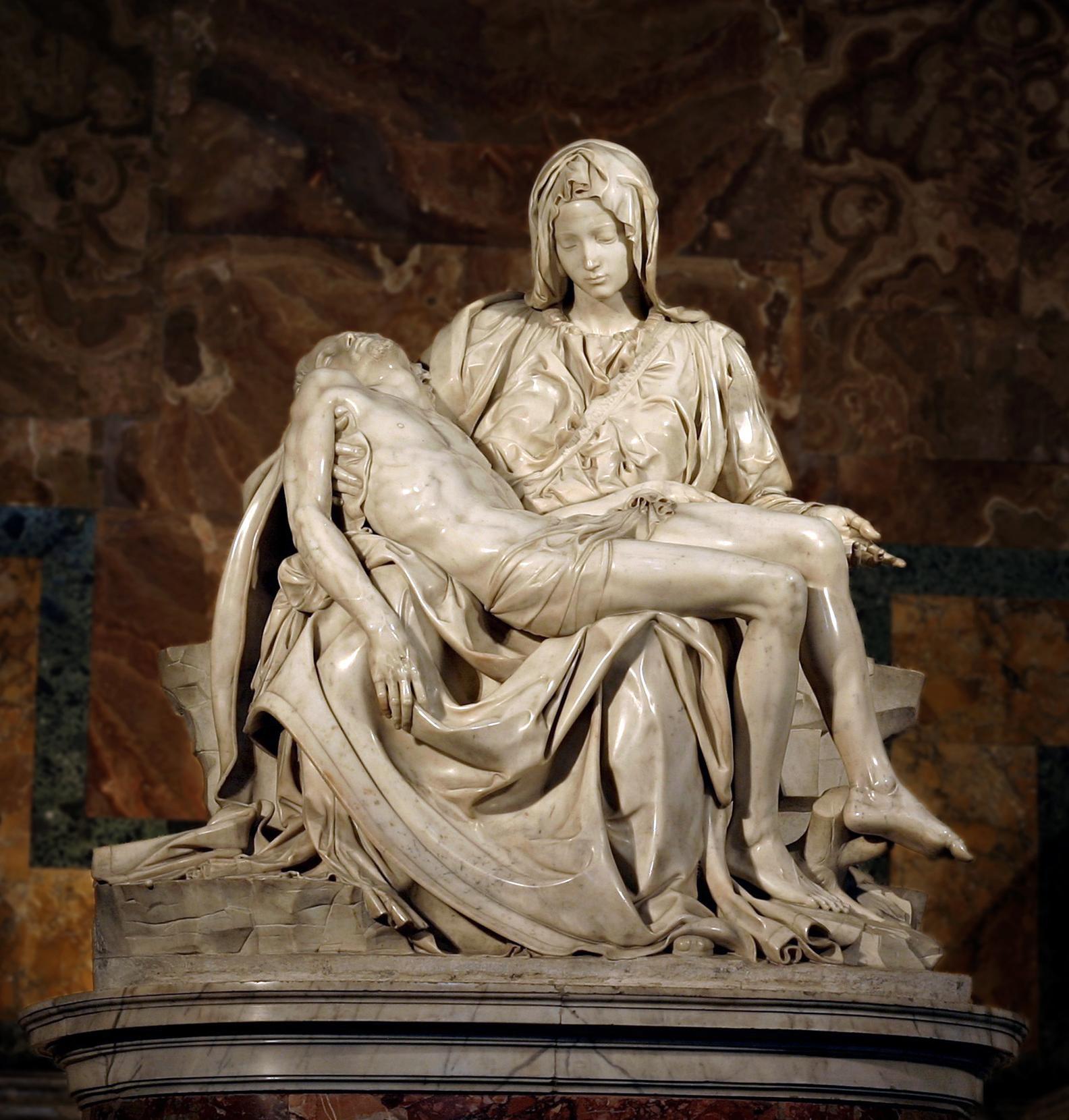
Source: Wikimedia
This sculpture is one of Michelangelo’s earliest works, as he completed it when he was just 23 years old. Despite finishing it when he was so young, this is the only piece of work that Michelangelo ever signed.
The Kiss
The Kiss is an impressive marble sculpture created by Auguste Rodin in the late 1890s and is believed to be one of Rodin’s most famous pieces of art. The French state commissioned Rodin, and much of his inspiration drew from the infamous story of Pablo and Francesca from Dante’s Inferno.

Source: Wikimedia
The sculpture was initially part of a larger work called “The Gates of Hell,” which was intended to be a pair of doors for a museum in Paris.
The Burghers of Calais, Calais, France
Yet another impressive work by Auguste Rodin during the 1880’s is The Burghers of Calais. This sculpture was created to commemorate a special event during the Hundred Years’ War. This was dedicated to the six citizens of Calais who offered their lives to English King Edward III in order to spare the city.
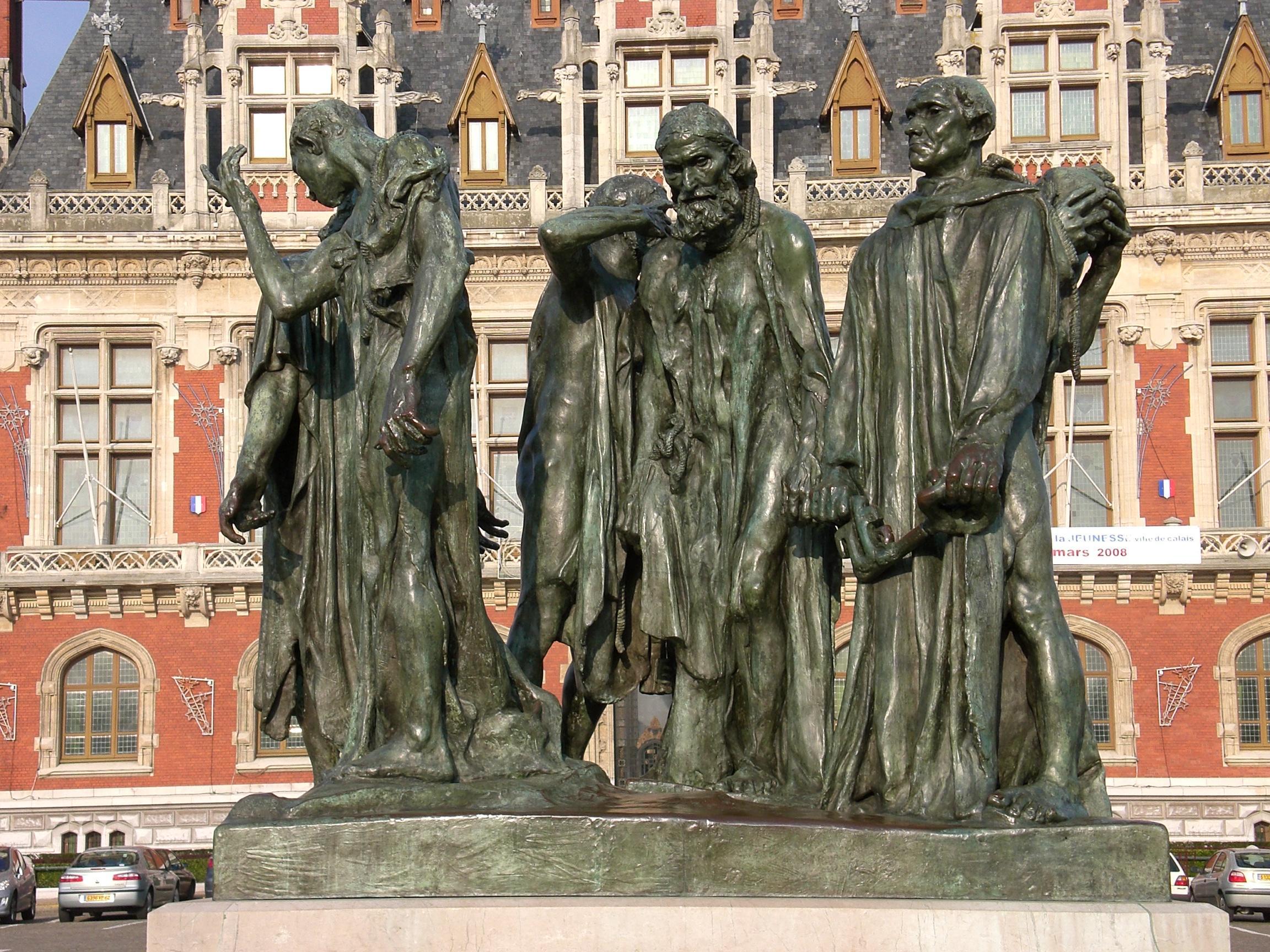
Source: Wikimedia
As opposed to portraying the individuals as proud and glorious, Rodin portrayed the men as troubled and isolated individuals. This portrayal helped display their anguish and common purpose.
Expansion - New York
Expansion is an impressive sculpture in which artist Paige Bradley incorporated bronze and electricity to complete it. Bradley ultimately created a series of sculptures in a few different sizes, but this is arguably her most famous.
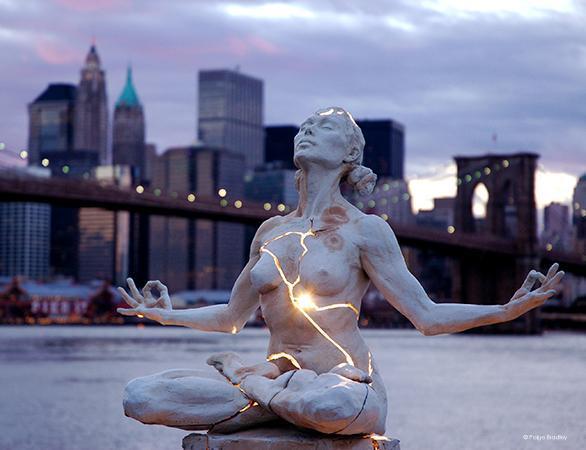
Source: Reddit / iam4real
The sculpture was initially created from a wax sculpture of a woman in the lotus position, which Bradley then dropped on the floor, allowing it to break into pieces. Bradley cast the pieces of the wax sculpture in bronze and assembled them so that they floated apart from one another.
Freedom - Pennsylvania
Freedom is an impressive sculpture by Zenos Frudakis in 2000. The sculpture is outside GlaxoSmithKline’s offices in central Philadelphia, Pennsylvania. The artwork consists of a large slab and a freestanding statue, measuring 20 feet long, 8 feet high, and weighing 7,000 pounds.
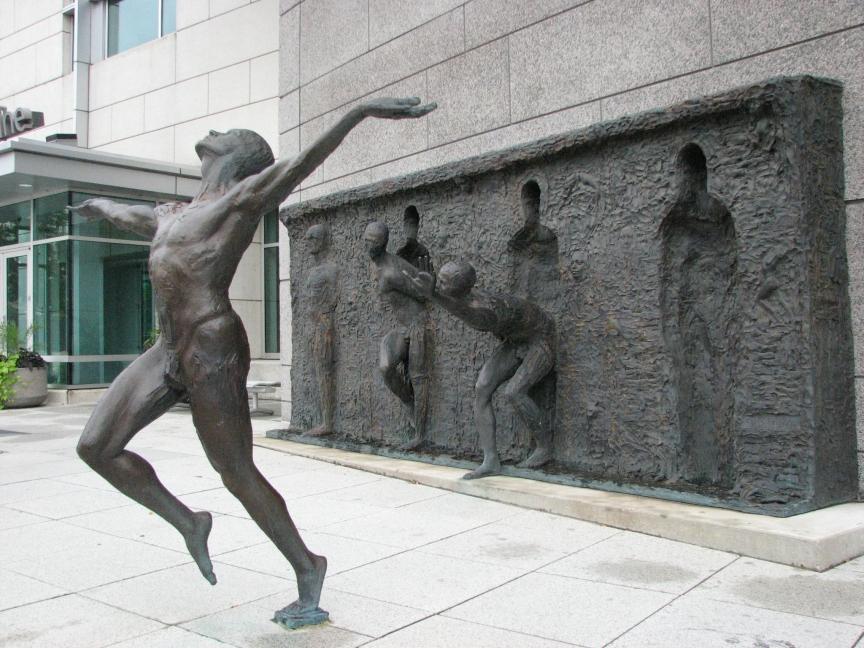
Source: Zillow
The public sculpture became so famous that it made the list of “28 of the Most Fascinating Public Sculptures” by Architectural Digest in 2019.
Diminish and Ascend - Australia
Diminish and Ascend is an aluminum sculpture designed by David McCracken, which was created for the” Sculpture by the Sea” exhibit in Sydney, Australia. The sculpture now stands in a lake at the Christchurch Botanic Gardens in New Zealand.
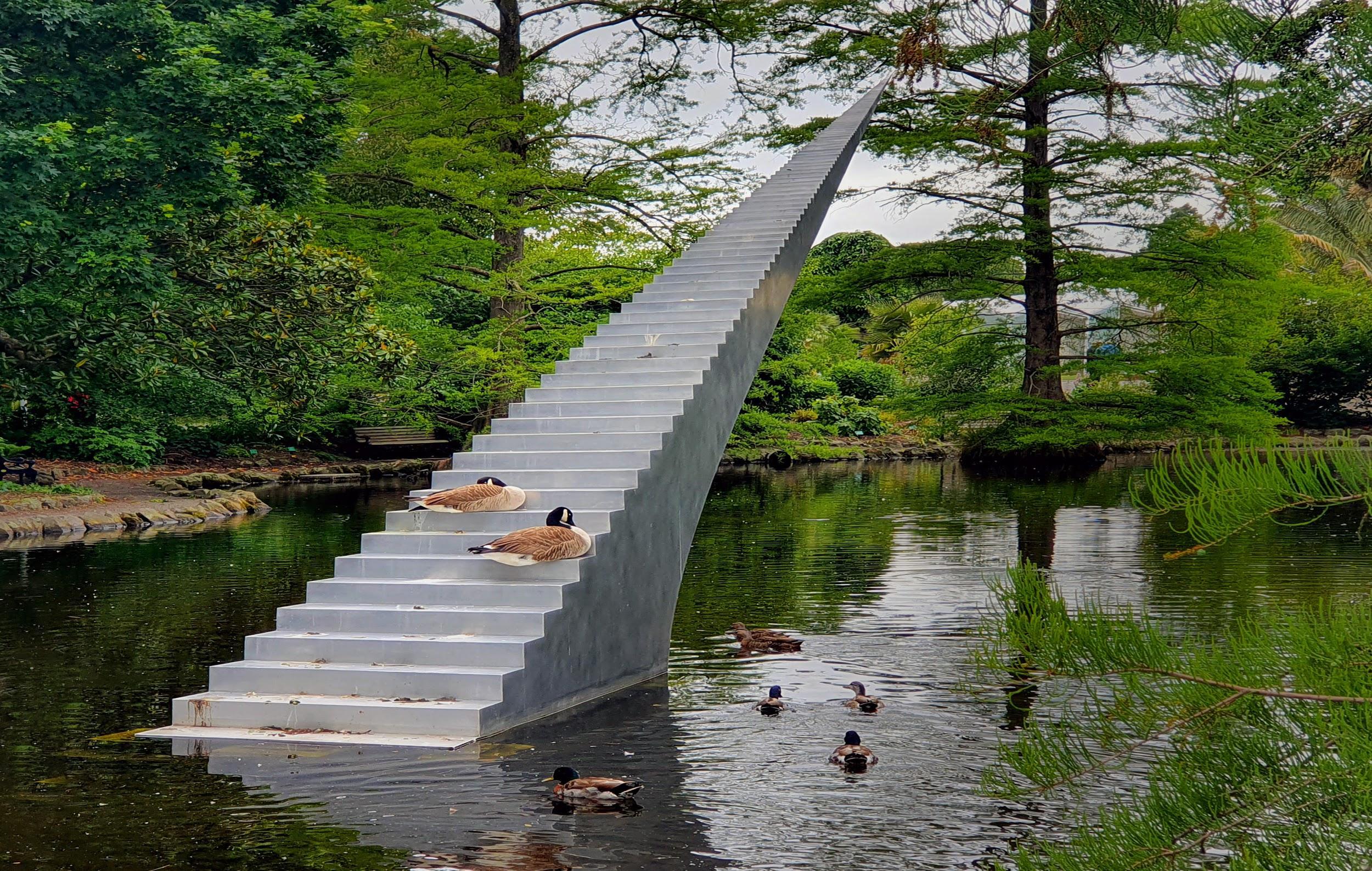
Source: Wikimedia
What makes this sculpture so impressive is the fact that it creates an optical illusion, giving the impression of an endless staircase going towards the sky.
Mustangs of Las Colinas - Texas
The Mustangs of Las Colinas is a bronze statue created by Robert Glen, currently standing in Williams Square in Las Colinas, Irving, Texas. The work commemorates the wild mustangs that were historically important inhabitants of much of Texas and represent the drive, and initiative lifestyle that were fundamental to the state in its pioneer days.

Source: Pinterest / Shelley Frost
The sculpture is part of a larger plaza setting designed by SWA Group, which includes a shallow watercourse extending 400 feet (120 m) from northeast to a gently sloping granite-paved open space about 300 feet (91 m) square.
The Caring Hand - Switzerland
The Caring Hand was created by Eva Oertli and Beat Huber in 2004 and is located in Glarus, Switzerland. The sculpture holds a lot of symbolism, displaying the responsibility humans have to nurture and protect the natural world around them.
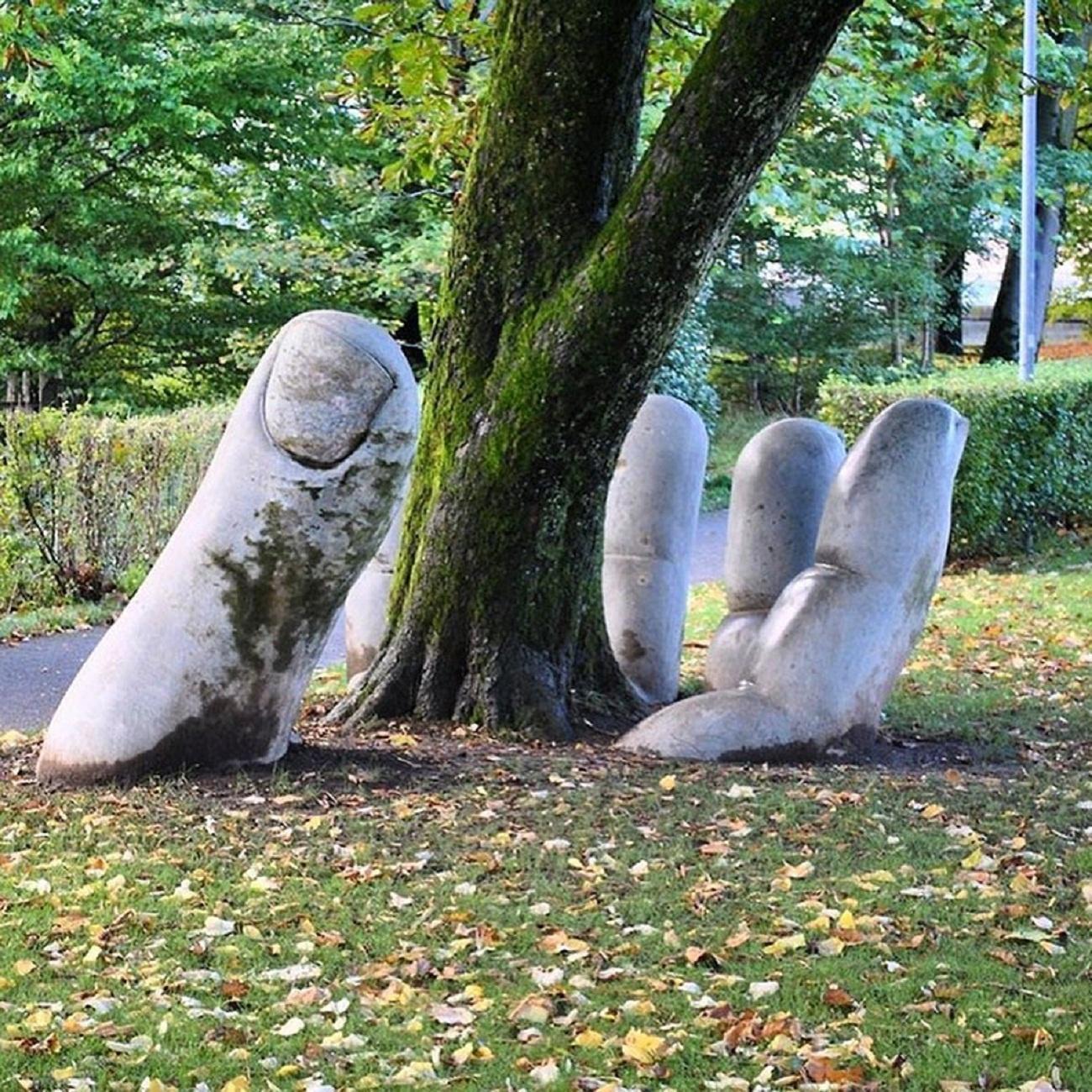
Source: Reddit / HockitTV
The sculpture is incorporated into its setting in a way that makes it appear as if it grows out of the ground rather than being imposed on the space from the outside.
The Giant’s Head - Cornwall
The Giants Head is in the infamous Lost Gardens of Heligan in Cornwall, United Kingdom. The Giants Head goes along with two other living sculptures in the gardens, Mud Maid and the Grey Lady. These sculptures are made from clay and plants, and they change with the seasons as the plants grow and evolve.
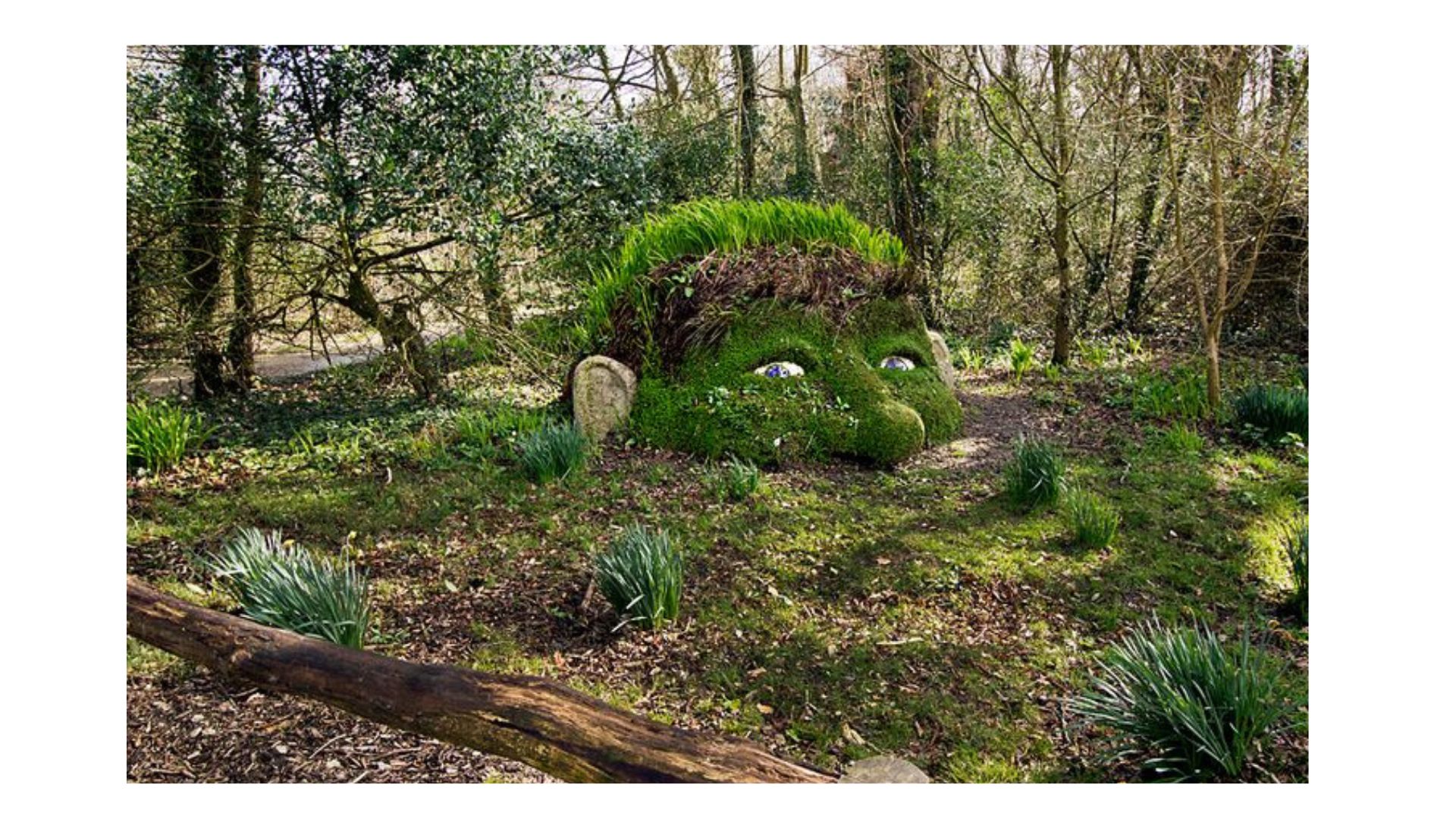
Source: Pinterest / Hole in the Donut Cultural Travel
The Giant’s Head and the other two living sculptures are commonly referred to as “The Sleeping Giants.” However, the Giant’s Head is the largest and is located at the highest point in the Lost Valley.
Vicissitudes - Grenada
Vicissitudes is an impressive underwater sculpture just off the coast of Grenada in the Caribbean Sea. This sculpture was created by Jason deCaires Taylor in 2007 and goes along with the Molinere Underwater Sculpture Park.
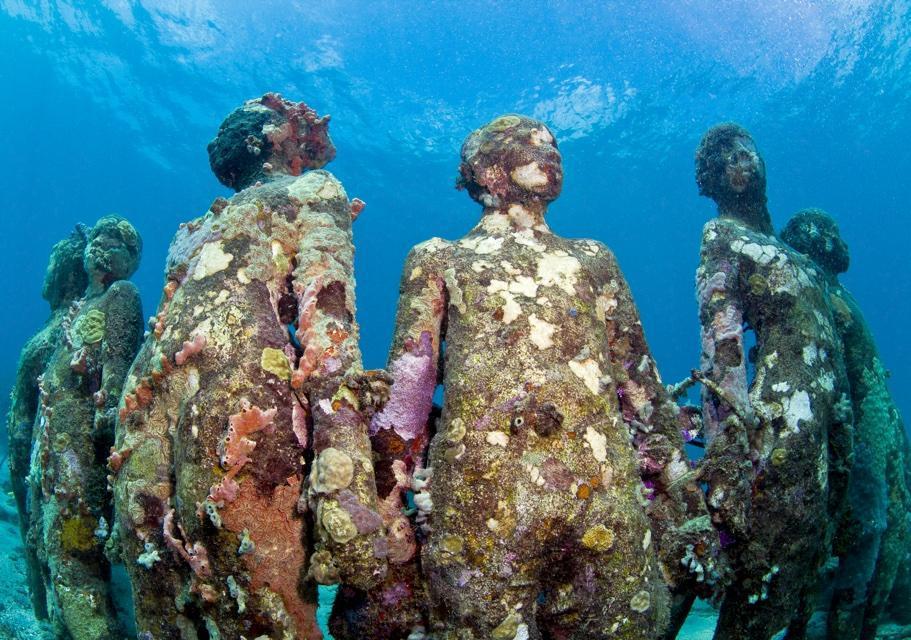
Source: Pinterest / Zen Cat Pottery
The children portrayed in this sculpture are used to symbolize unity, resilience, and growth. This sculpture is also designed in an effort to aid coral growth and help recover the environment after Hurricane Ivan in 2004.
The Guan Yu Statue - China
The Guan Yu statue in Jingzhou, China, is a bronze sculpture created in dedication to the Chinese military general Guan Yu. This gigantic statue was designed by Han Merlin and was finished in 2016. There are many different statues of Guan Yu around the world, but this is the largest and, by far, the most impressive.

Source: Wikipedia
It cost an astounding $26 million to complete and has since received a lot of criticism from the surrounding area. So much so that the Ministry of Housing and Urban-Rural Development ruled that the statue had to be removed. They are relocating the statue, and it is estimated to have cost around $24 million to do so.
Popped Up - Hungary
Popped Up is considered to be a temporary sculpture created by Ervin Lora the Herve and is located in Szechenyi Square in Budapest, Hungary.
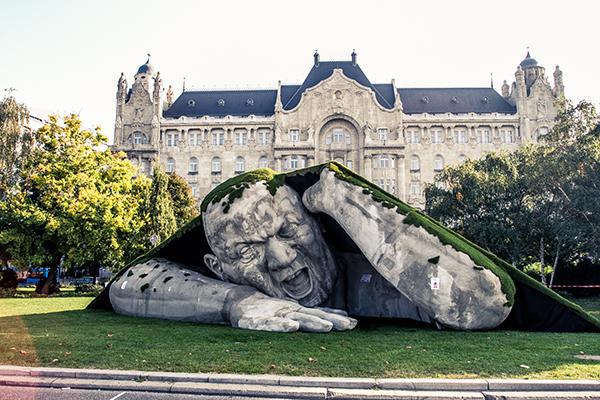
Source: Reddit / petitbleuchien
The artwork was displayed on the grounds of Gresham Palace during the Art Market Budapest Festival. The artwork was intended to show that contemporary art can be an integral part of a city and its building blocks.
Unknown Bureaucrat - Iceland
The Unknown Bureaucrat was created by Magnus Tomasson in 1994 located in Reykjavik, Iceland. The statue is faceless, with a large slab of Icelandic volcanic basalt where the head and torso would be.
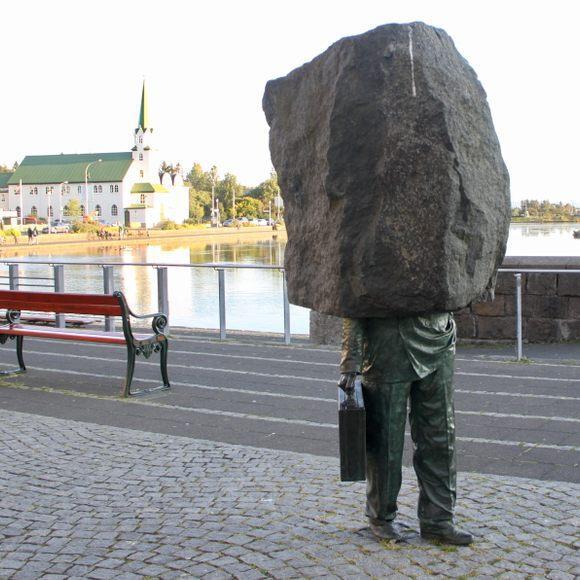
Source: Pinterest / SD Reader
The sculpture portrays a man in a business suit, along with a briefcase, going towards city hall. The ultimate purpose of this sculpture is to be a tribute to the city officials who serve their country.
Hippo Square - Taiwan
Hippos Square is an impressive sculpture located at the Taipei Zoo in Taiwan. Former zoo director Chen Pao-Chung originally began the creation of the remarkable bronze sculptures. Hippo Square was named one of the world’s 25 most creative statues and sculptures by Boredpanda.
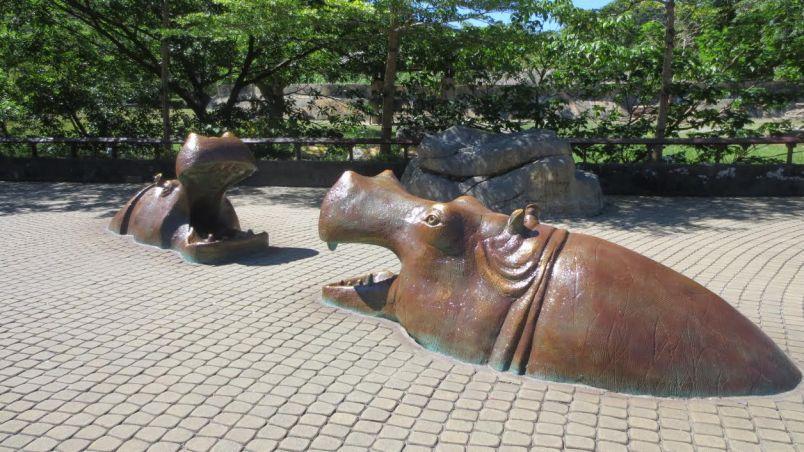
Source: Quilaztli.over-blog
The ultimate reason for creating the sculptures was to complement the African Animal Area within the zoo. They have become one of the most photographed attractions at the Taipei Zoo.
The Kelpies - Scotland
The Kelpies are two 30-meter-high (98 feet) horse-head sculptures between Falkirk and Grangemouth in Scotland. The horse heads were designed by Andy Scott and were completed in October of 2013. These sculptures were created in order to display the lineage of the heavy horse of Scottish industry and economy.

Source: Wikimedia
Despite their massive size and 18,000 individual pieces each, they were completed in just 90 days. The Kelpies are even the largest equine sculptures in the world.
The Headington Shark - England
The Headington Shark is a rooftop sculpture located at 2 New High Street, Headington, Oxford, England. Sculptor John Buckley officially gave it the name “Untitled 1986”, depicting a large shark being embedded into the roof of a house.

Source: Wikimedia
The sculpture was installed in 1986 but was installed without permission in the form of a protest against nuclear weapons and bombs. The shark was erected on the 41st anniversary of the dropping of the atomic bomb “Fat Man” on Nagasaki. The sculpture has become a local landmark and a symbol of defiance against bureaucratic powers.
Transcendence - Oregon
Transcendence is a unique sculpture located in Portland, Oregon, created by sculptor Keith Jellum. This sculpture was created in 1998, and is located above Southpark Seafood.
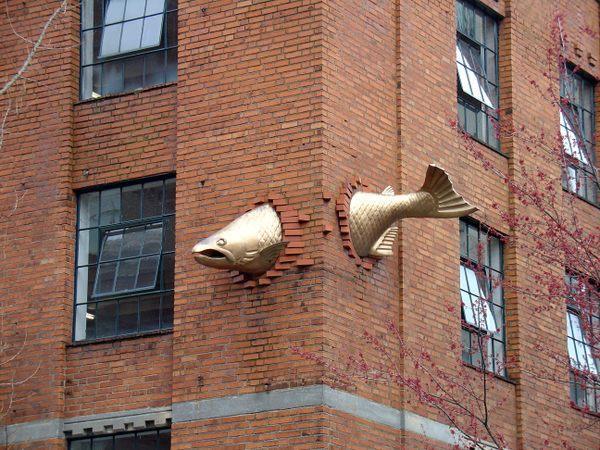
Source: Pixabay
The sculpture was created with bronze and measures 11 feet in length. The Seattle Post-Intelligencer described the sculpture and its relation to the city as fitting due to Portland’s friendly and whimsical nature.
METALmorphosis - North Carolina
METALmorphisis was created by David Černý and is located in Charlotte, North Carolina. The sculpture consists of 40 steel pieces grouped into seven segments, which can independently rotate 360 degrees.
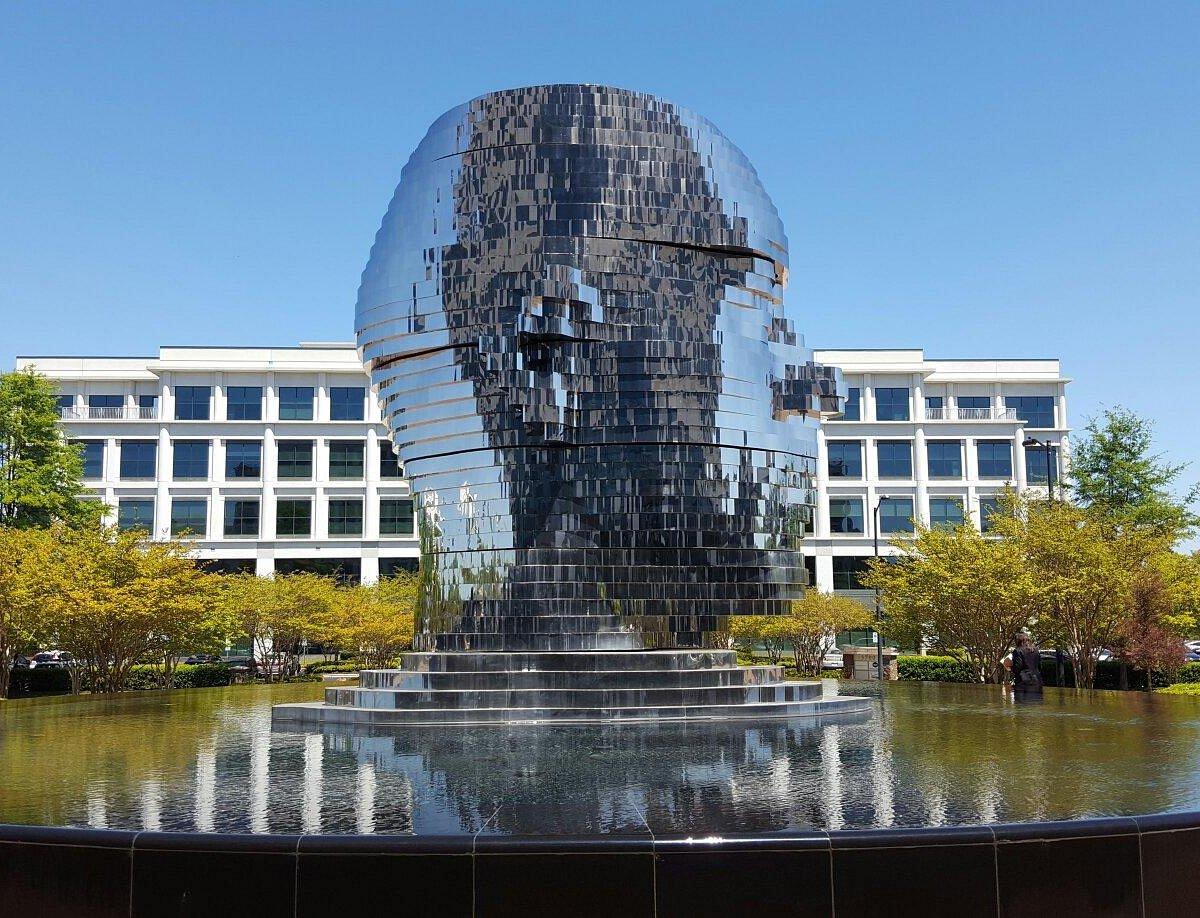
Source: Pinterest / My Modern Met
The sculpture resides in a large reflecting pool at the Whitehall Corporate Center. The original design actually had a spout for water to come out of the mouth, but that never came to fruition. A specific computer program handles each motor to create choreographed sequences, and each motor has a feedback system to understand the location of each part at any given time.
